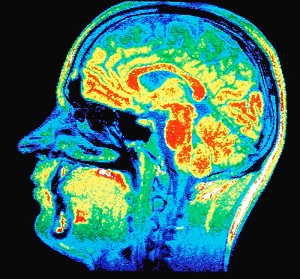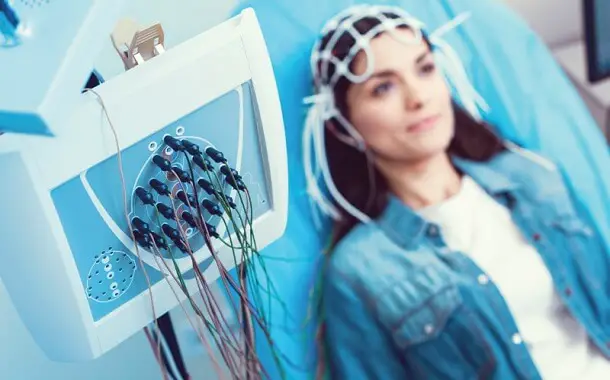EEG Test Cost
EEG or electroencephalography is a diagnostic test used to record the electrical activity of the brain to provide essential information about the presence and location of brain lesions.
This test is recommended in the diagnosis of epilepsy, dementia, headaches, and loss of consciousness (fainting). The electroencephalogram is performed with the electroencephalograph machine by the neurologist, who has skills in neurophysiology. The examination can take up to 45 minutes, and the actual registration between 20-30 minutes. The procedure is painless and non-invasive.
How Much Does an EEG Test Cost?
Like any other medical test, the cost of an EEG is affected by various factors such as the clinic you choose, the place where you are living, and if you have health insurance or not. In case you are covered by health insurance, then the amount of money you are going to get out of your pocket will depend on your own health insurance plan. For example, if you choose to have the EEG test done at a hospital, instead of a third-party laboratory or doctor’s office, then you will need to spend much more.
In case you don’t have health insurance, then you will have to pay for an EEG anywhere between $300 and $1,100. But if you need extended monitoring, the cost may greatly increase.
What does the EEG test consist of?
About 23 electrodes are placed on the head, using a sticky paste to get them to stick better. Throughout the recording, the patient will be seated in a chair or lying down, for a high state of comfort.
At various times, the physiologist will ask the patient to open and close their eyes. Once the electrodes are in place, the patient is asked to relax, facing to a flashing light with their eyes closed and open. The nurse may ask the patient to breathe rapidly and deeply for 3 minutes.
Electroencephalography has no side effects, no X-rays or needles. Moreover, it cannot read minds, as many patients mistakenly believe.
How is EEG performed?
 In general, an EEG procedure follows this process:
In general, an EEG procedure follows this process:
- You will be asked to relax on an inclined chair or lie down on a bed.
- Between 16-25 electrodes will be attached to the scalp with a special paste or a helmet containing the electrodes will be used.
- You will be asked to close your eyes, relax and be quiet.
- Once the recording starts, you will have to remain still throughout the test. The doctor may monitor you through a window in an adjacent room to note any movement that may cause a change, such as swallowing or blinking. Recording can be stopped periodically to allow you to rest or reposition.
- The technician may instruct you to do certain things while the test is in progress. They may ask you to sit still, close your eyes, breathe deeply, or look at stimuli (such as a flashing light or a picture).
- For home testing, you will be encouraged to do as much of your normal activities as possible, with a few notable exceptions: You may be instructed not to chew gum or suck on candy, as jaw action could affect the test. It is also important to keep the electrodes and the device dry, so you may not be able to take a bath or shower.
Tips after the procedure
You can resume your normal activity after completing the test. The hair may be sticky after the procedure, requiring washing. You may find that the scalp is red and irritated where the electrodes were placed. This does not persist and the irritation passes in a short time.
You might also like our articles about the cost of coronary angiography, stress tests with echo, or brain MRI.
How do you prepare for EEG?
- Wash your hair the night before the appointment and do not use hair products (gel, hair spray, etc.).
- Eat 2-3 hours before the test.
- Avoid drinking coffee.
- Take medicines according to your normal schedule, unless your doctor tells you otherwise.
EEGs may be performed to help monitor treatment or for the need to change it.
When is the EEG test recommended?
After cerebral imaging, such as the MRI, the electroencephalogram represents a top priority investigation in the case of:
- episodes of loss of consciousness;
- the first convulsive crisis;
- episodes of complete memory loss, from a few minutes to a few hours.
Loss of consciousness or an event such as the first convulsive crisis requires EEG evaluation as quickly as possible to capture possible changes in close connection with the clinical event, establishing a therapeutic decision and the protocol for subsequent investigations.
The EEG is necessary for the diagnosis of pathologies that present symptoms such as:
- repeated sensations of dreaming during the day uncontrolled movements of the limbs, face, and trunk;
- movements during sleep;
- a sensation of numbness in the face, limbs, or body with a recurring character, without a clear diagnosis;
- the feeling of dizziness without a clear diagnosis;
- the feeling of nausea and epigastric pain, without a gastroenterological substrate to explain the symptoms.
Possible risks
Electroencephalography has been used for many years and is considered a safe procedure. The test does not cause discomfort. For most people, an EEG is perfectly safe and poses no significant risks. Remember that the electrodes used for EEG only capture electrical charges. They do not emit electricity and are harmless. There is no risk of electric shock.
In rare cases, an EEG can cause seizures in a person with epilepsy. This is due to the use of flashing lights or deep breathing that may be involved during the test. If you have epilepsy, there is a very small risk of having a seizure during the test, but you will be closely monitored and the doctor will intervene in time if necessary.


Leave a Reply
Want to join the discussion?Feel free to contribute!